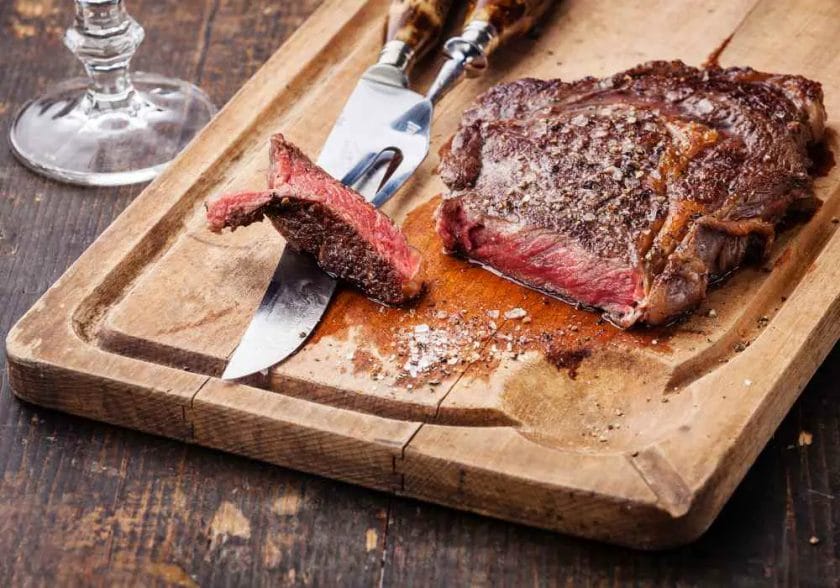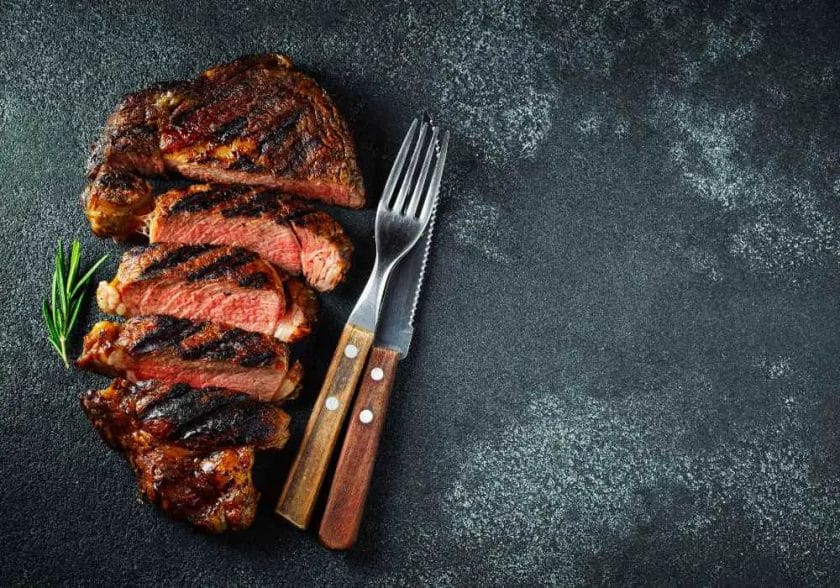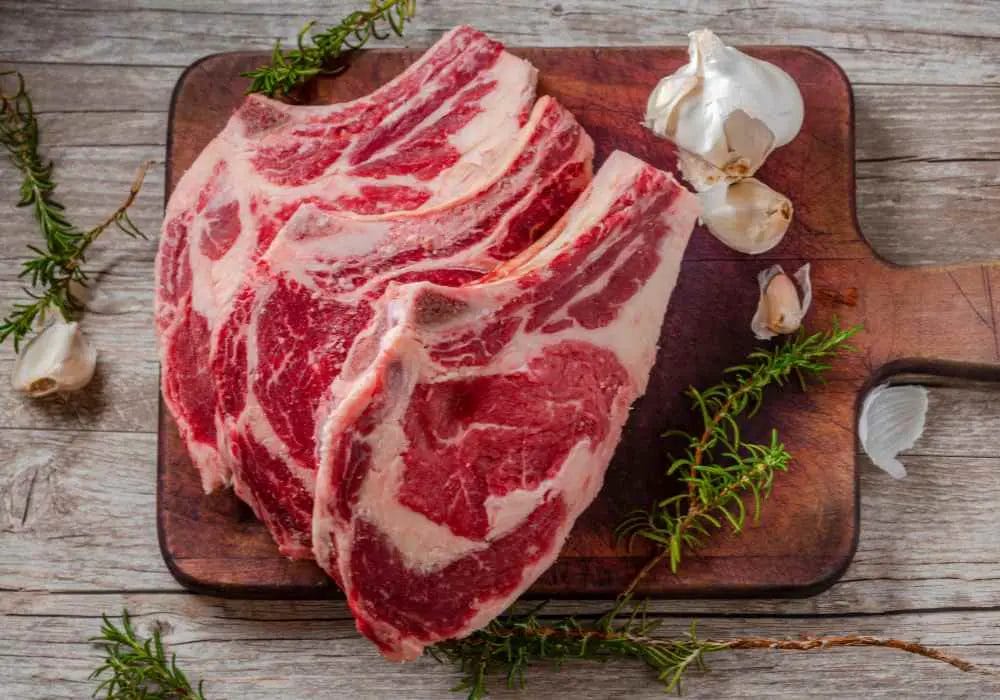A half cow is a term used to describe a half of a cow that has been butchered and packaged for sale.
This typically includes a variety of cuts of beef, such as steaks, roasts, and ground beef. In this article, we will focus on one specific cut of beef: the ribeye steak.
Specifically, we will be discussing how many ribeye steaks can be expected from a half cow.

Understanding the Anatomy of a Cow
Before delving into the specifics of how many ribeye steaks can be obtained from a half cow, it is important to have a basic understanding of the anatomy of a cow and the different cuts of beef that can be obtained from it.
A cow is divided into several main sections, including the chuck, rib, short loin, sirloin, round, and flank. Each of these sections yields a variety of different cuts of beef.
The ribeye steak comes from the rib section of the cow, which is located between the chuck and the short loin.
This area is known for its marbling, which results in a tender and flavorful cut of beef. Other cuts of beef that can be obtained from the rib section include the prime rib roast and the ribeye roast.
Factors that can affect the yield of ribeye steaks
There are a number of factors that can affect the yield of ribeye steaks from a half cow.
These include the size of the cow, the age of the cow, the breed of the cow, the skill of the butcher, and the processing method.
Size of the cow: A larger cow will yield more beef overall, including more ribeye steaks.
Age of the cow: The age of the cow can affect the overall yield of beef, as well as the quality and flavor of the meat. Younger cows tend to be more tender and flavorful than older cows.

Breed of the cow: Different breeds of cows can have different yields of meat and different characteristics in the meat. Some breeds are known for their marbling and tenderness, which make them ideal for ribeye steaks.
Skill of the butcher: The skill and experience of the butcher can affect the yield of ribeye steaks, as well as the overall quality of the cuts of beef. A skilled butcher will be able to make precise cuts that maximize the yield of ribeye steaks.
Processing method: Different processing methods can affect the yield and quality of the meat. Wet-aged beef, for example, tends to have a higher yield of ribeye steaks than dry-aged beef due to the difference in shrinkage during the aging process.
How Many Ribeye Steaks in a Half Cow?
The average yield of ribeye steaks from a half cow can vary, but it’s generally around 15-20 steaks.
This is based on an average-sized cow that is around 1,100-1,200 pounds hanging weight. However, it’s important to note that this is just an estimate and the actual number of ribeye steaks obtained can vary depending on the size and weight of the cow, the skill of the butcher, and other factors.
It’s also important to note that the yield of ribeye steaks from a half cow can vary based on the specific cut of the ribeye steak.

For example, the bone-in ribeye steak will have a slightly lower yield than the boneless ribeye steak due to the weight of the bone.
When compared to other cuts of beef, the yield of ribeye steaks from a half cow is relatively low.
However, it’s important to remember that the ribeye is considered to be one of the most desirable cuts of beef due to its high marbling and exceptional flavor.
Conclusion
In conclusion, the number of ribeye steaks in a half cow can vary based on a number of factors such as the size and weight of the cow, the skill of the butcher, and the processing method. On average, a half cow will yield around 15-20 ribeye steaks.
However, it’s important to remember that the ribeye is considered to be one of the most desirable cuts of beef due to its high marbling and exceptional flavor.
To ensure you get the most ribeye steaks from a half cow, it’s important to choose a larger cow, select a skilled butcher and consider the processing method.
What is the difference between a bone-in ribeye steak and a boneless ribeye steak?
A bone-in ribeye steak includes the rib bone as part of the cut, while a boneless ribeye steak does not include the rib bone.
The bone-in ribeye steak will have a slightly lower yield than the boneless ribeye steak due to the weight of the bone.
Additionally, some people prefer the bone-in ribeye for the added flavor and juiciness it can bring to the steak.
Can I request a specific cut of ribeye steak from a half cow?
Yes, it is possible to request a specific cut of ribeye steak from a half cow, such as bone-in or boneless.
However, it’s important to note that this may affect the overall yield of ribeye steaks from the half cow. It’s best to discuss your specific cut preferences with the butcher to ensure they are able to accommodate your request.
Can I request a specific age or breed of cow for my half cow?
Yes, it is possible to request a specific age or breed of cow for your half cow. Different ages and breeds of cows can have different yields of meat and different characteristics in the meat.
For example, some breeds are known for their marbling and tenderness, which make them ideal for ribeye steaks.
Does the processing method affect the taste of the ribeye steak?
Yes, the processing method can affect the taste of the ribeye steak. Wet-aged beef, for example, tends to have a higher yield of ribeye steaks than dry-aged beef due to the difference in shrinkage during the aging process.
Additionally, dry-aged beef is more expensive and has a stronger and nuttier taste. Wet-aged beef is less expensive, but has a milder taste.
How long can ribeye steaks be stored in the freezer?
Ribeye steaks can be stored in the freezer for up to 6 to 12 months. It’s important to properly package the steaks, using freezer-safe containers or vacuum-sealed bags to protect them from freezer burn.
Additionally, it’s recommended to label the package with the date of freezing, so you know how long they have been stored.

